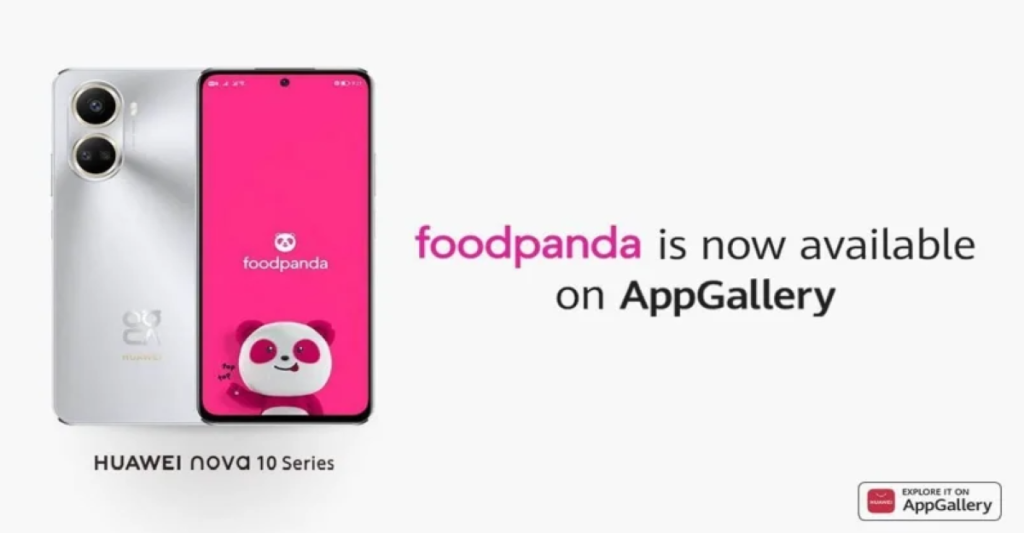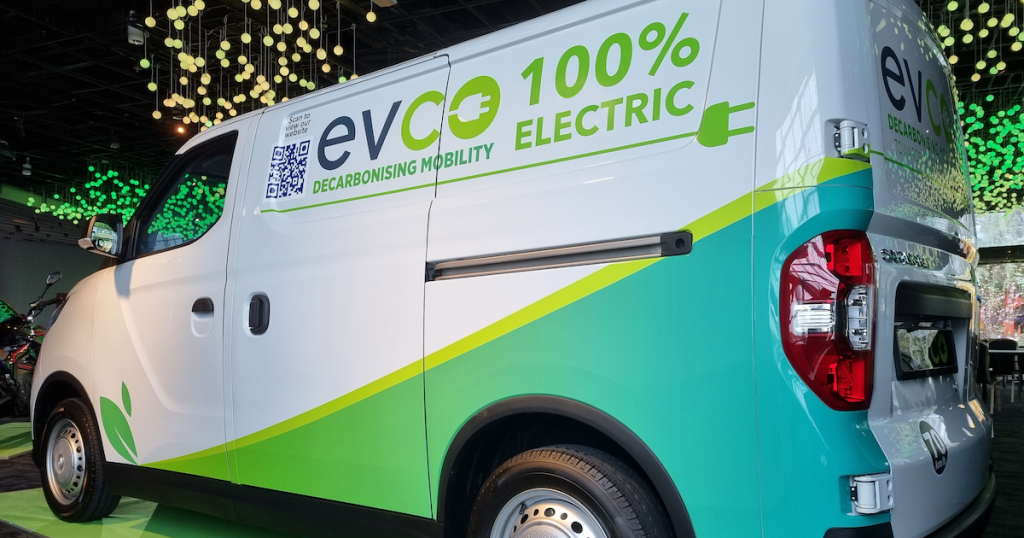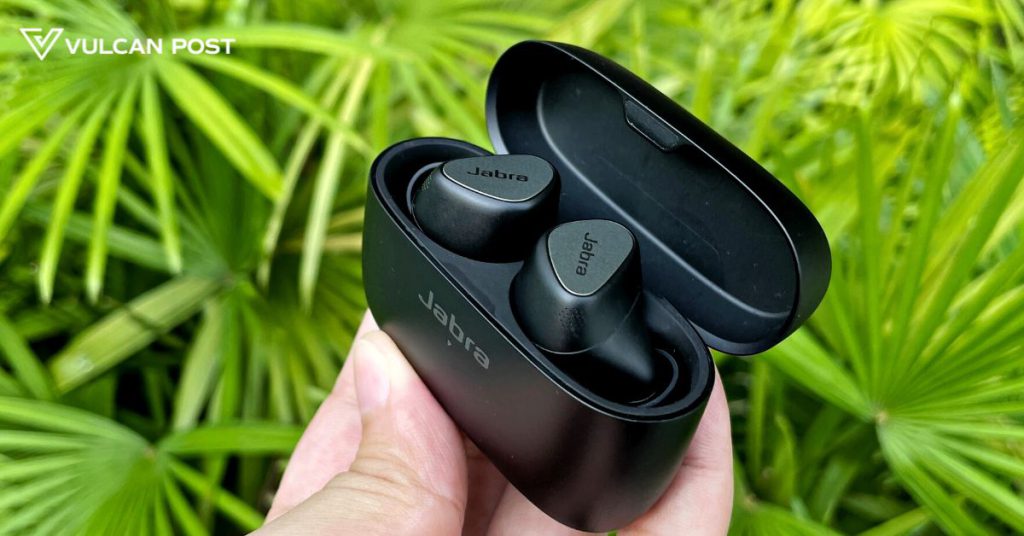foodpanda partners Huawei to pre-install its app on new Huawei mobile devices, to engage new customers

Food and grocery delivery platform foodpanda has formed a long term collaboration with Huawei to launch the foodpanda app on Huawei’s app marketplace, the Huawei AppGallery, for all Huawei smartphone users. The app will come pre-installed on millions of new Huawei mobile devices across Southeast Asia.
In addition, Huawei will run a series of integrated advertising campaigns on foodpanda’s AdTech platform, panda ads. In turn, foodpanda will be leveraging HUAWEI’s ad platforms, which includes HUAWEI’s own media and third party media channels to reach out to HUAWEI users.
Providing easy access to on-demand deliveries in Asia

Through the partnership, hundreds of millions of Huawei smartphone users can now get food, groceries, electronics, gifts, and more, delivered to their doorsteps in as quickly as 30 minutes.
With foodpanda on our AppGallery, we are able to elevate the experiences of our users, increasing convenience and making deliveries accessible to them. Users can continue to look forward to more benefits and enhanced experiences through Huawei’s expanding cooperation with global partners.
Rei Xiao, Director of Mobile Ecosystem Business Growth, Huawei APAC Region
The foodpanda app has been available to Huawei smartphone users since 1 November this year in foodpanda’s 11 markets.
We’re excited to join forces with Huawei and help it reach millions of foodpanda customers who are digital-savvy and can therefore resonate with Huawei’s latest technologies and advancements.
It also opens doors for us to touch the lives of millions of Huawei users who wouldn’t otherwise have access to the conveniences that on-demand deliveries offer.
Kiranjeet Singh Purba, Senior Director, Advertising and Partnerships at foodpanda
Reaching new, mobile-first customers via AdTech

The Huawei AppGallery, which has grown to become the third largest app marketplace worldwide with 580 million daily active users across 170 countries, is part of Huawei Mobile Services (HMS), a set of applications, services, open devices and cloud functions provided by Huawei for its equipment ecosystem.
HMS aims to build a 360 ecosystem consisting of Huawei’s mobile service framework Huawei Mobile Services (HMS) Core, AppGallery, Huawei’s map service Petal Maps, and Huawei’s AI-powered mobile search engine Petal Search.
To help sustain its growth, HMS is tapping on panda ads to reach millions of foodpanda’s customers who use the app daily. Through panda ads’ AdTech and marketing solutions, Huawei will be able to increase its visibility and build brand awareness to drive sales.
Huawei will leverage panda ads to promote Huawei’s latest flagship products and user incentive campaigns for AppGallery and other HMS products, such as Petal Search, among millions of foodpanda
customers.
Similarly, Huawei will promote the foodpanda app on its AppGallery, and encourage users to download it, giving foodpanda the opportunity to engage with new customers.
Omnichannel collaboration between foodpanda and Huawei
This online-to-offline collaboration will span across foodpanda and Huawei’s social media channels as well as foodpanda’s (out-of-home) OOH billboards.
In addition to this, as part of foodpanda and Huawei’s joint marketing efforts, Huawei will also run promotional campaigns in collaboration with foodpanda.
For example, in the Philippines, pandapro subscribers using Huawei’s nova 10, nova 10 Pro, and nova 10 SE devices can claim vouchers and save as much as PHP₱7,200 with each foodpanda order. Similar deals will be made available in all other markets.
pandapro is a subscription service for foodpanda users that offers free delivery, attractive discounts, and new features like Dine-in.
Featured Image Credit: foodpanda
Also Read: foodpanda S’pore launches new Rider Hub – expands suite of free courses for delivery partners
EVCo to launch S’pore’s largest ride-sharing for electric commercial vehicles targeted at SMEs

It seems like Singapore’s aggressive efforts to phase out internal combustion engine (ICE) vehicles are slowly starting to pay off.
Electric vehicle (EV) adoption numbers have been on the rise. EVs account for more than 10 per cent of all new car registrations in 2022, nearly tripling the adoption rate in 2021.
In September alone, it reached a record high of 19 per cent, with one in every five vehicles registered as EVs.
However, the same cannot be said in the commercial vehicle segment, where factors such as vehicle cost, vehicle availability, and the inconveniences of charging EVs have caused small and medium-sized enterprises (SMEs) to think twice about jumping on the EV bandwagon.
These issues prompted EVCo — an electric mobility startup set up by SMRT’s Strides Mobility and DST, one of China’s largest EV platforms in April 2022 — to come up with a new scheme that is slated to start next year.
Called EV-Work, it is Singapore’s largest ride-sharing programme for commercial vehicles, targeted at SMEs and independent last-mile service providers.
Driving down costs for businesses
EVCo is an end-to-end solutions provider for companies looking to transition into electric mobility.
“Ride-sharing was never in our initial business model, however the requirements of our customers — who needed a cost-effective, flexible way to scale up or down operations based on their sales volumes — inspired us to build a financial and operational model for this purpose,” said Fuji Foo, managing director of EVCo.
Furthermore, he sees the SME market segment as the most competitive in any country.
“Companies are fighting tooth and nail for every advantage, therefore a cost-efficient solution to mobility was always going to resonate better,” he explained.
Since businesses can accordingly scale their fleet based on sales volumes, this can help them to reduce fixed costs and inherent risks of taking on too much too soon.
On the other hand, for contract drivers who own the vehicles, they get to work efficiently without a high upfront capital risk.
“No man is an island. Mass EV adoption is only possible when we build a strong ecosystem of services designed to address the needs of the wider community,” said Foo.
“Not only does our EV-Work fleet reduce carbon emissions produced in the process of parcel delivery to Singaporean households, but it is also accessible in price, helping any independent delivery driver retain more earnings.”
For added convenience, EV-Work has partnered P.Up, Singapore’s first on-demand mobile EV charging service, to charge and clean each EV vehicle overnight so that the vehicle is ready for use the next morning.

“P.UP is proud to partner EVCo in creating an environment where our SMEs can adopt EVs without having to worry about availability and convenience. At the same time, we have committed to onboard 100 EV-Work vans on annual programmes as our P.UPPIES,” said Michael Chin, founder of Power Up Tech (P.UP).
“We are fully supportive of this initiative, mainly because it helps SMEs transition to EVs in a cost-efficient manner, without them having to invest heavily in infrastructure while being able to draw the benefits of this EV revolution.”
“Everybody uses their cars differently, but in terms of energy cost, SMEs and business owners can expect a 40 to 50 per cent reduction on average, comparing between EV charging costs and diesel and petrol,” said Michael.
He roughly calculated that the average business travels about 5,000km a month, and the fuel cost for this amounts to about S$1,500. However, if they were to opt for EV mobile charging with P.UP, the cost is halved to about S$700 to S$750.
“And they don’t have to cater to any costs like infrastructure, capex (capital expenditure), so it’s pure savings.”
Making it easy for SMEs to adopt EVs

There are as many as 20 EV-Work clusters planned islandwide, where the user can access EV-Work’s medium-sized light goods vans.
There are three different subscription plans in place. They can opt to pay a one-time fee to use the van for a full charge, which gets an average use of 220km; or opt for a more cost-effective monthly scheme.
As for its annual scheme, SMEs get the added perk of branding the EVs in their company colours.
The initiative aims to rollout a 2,000-strong fleet, 550 of which will be operational from January 2023.
Out of the first 550 vehicles, 60 per cent of them have already been subscribed by local SMEs, majority of which belong in the logistics and last-mile industries.
For instance, SOS Logistics has committed 100 EV-Work vans under the annual programme.
“EV-Work is a gamechanger for my business. It helps me to scale according to my business needs without the worries of capital expenditure and operating expenses,” said Markus Lim, founder of SOS Logistics.
Meanwhile, William Ng, general manager of same-day delivery company U-Parcel said that EV-Work allows its regular drivers to save on costs, while the availability of an islandwide fleet conveniences its ad-hoc drivers to pick up jobs quickly.
These customer stories are evident of the productivity gains and reduced costs that businesses stand to benefit from EV-Work.
“This is a very small first step in our ambition to ensure EV adoption, and the environmental benefits that come with this adoption, is accessible to every business,” said Foo.
Commenting on the EV landscape in Singapore, Foo said that the number of EVs on the road will be limited to the number of Certificates of Entitlement (COEs) issued and the pricing of the COE.
While it is still unclear if there will be giant leap in EV adoption, he is confident that with companies like EVCo taking the lead in bringing about change, the EV revolution is well-positioned and set to grow even more.
Summing up on future plans, Foo said that there are plenty of opportunities to explore in Singapore and beyond, and that they will soon announce “significant partnerships” in Thailand and Australia.
Featured Image Credit: SMRT
Also Read: This S’pore startup built a “portable powerbank” for EVs – lets drivers charge anytime, anywhere
The Jabra Elite 5 aren’t perfect, but here’s why they’re now my ideal everyday buds

As someone who loves music ASMR, I’m surprisingly unenthused when it comes to earphones. To me, it all comes down to whatever gets the job done. No ANC, no problem. Just deliver the sound waves to my brainwaves, and we can call it a day.
But, well, that was the position I had before I got the privilege to try a variety of earphones and actually read into all the innovative technology that various earphones feature.
The most recent pair I’ve been trying is the Jabra Elite 5. It’s my first go at a pair of Jabra earphones, a brand that my colleagues have been raving about. “Loyal fans,” they call themselves.
I never understood, but now, I think I’m really starting to.
Everything I love about it
Made with a lightweight matte plastic material, the Jabra Elite 5 case is tall with a slender profile.
Within, a rubbery surface cradles the buds. This seems to give a sense of safety and protection whenever dropping the earbuds into place. I do wish that the lid of the case was also lined with a rubbery material too for a softer snap when closing it.
Trying the earbuds for the first time, I noted that they fit into my ear very nicely. This is likely thanks to what Jabra calls a “super-comfortable ergonomic design” that it developed based on its database of 62,000 ear scans.
The audio quality was so crisp and immersive that I legitimately thought the sounds were blasting from my phone. It feels like a 3D soundscape that has a lot of depth and texture, picking up on all the nuances of my favourite tracks.

After having a pretty annoying experience (at times) using the Samsung Buds 2 Pro, whereby accidental mishaps were basically happening every other minute, I absolutely love the Jabra’s large, tactile buttons.
Its multifunctionality is well-thought-out, though it took me a while to properly distinguish which functions were on the left versus the right.
Able to pair up to six Bluetooth devices at once, the multipoint Bluetooth feature of the earphones was also intuitive and useful.
Meanwhile, the six-mic call system sounds like a nifty feature to have if you’re someone who takes a lot of calls in noisy environments.
According to Jabra, the Jabra Elite 5 features internal mics that activate in windy environments. Our attempts proved that the buds were able to cut through windy sounds while still projecting the speaker’s voice clearly.
However, we found that it couldn’t isolate and cancel out normal office noises such as typing on mechanical keyboards and mouse-clicking. So if you’re aiming to take calls in the office, we recommend you still find a quiet spot to do so.
I love the ANC, but the Hear-Through…
The issue I have with ANC is that it often feels like there’s a very distinct pressure against my ears that I dislike.
If you struggle with this too, the science is that ANC buds generate low-frequency sound waves that can cause a whole bunch of psychosomatic issues.
But the Jabra Elite 5’s ANC is likely the most comfortable one I’ve tried thus far. To me, it also feels quite natural and not that overpowering.
With that said, that might be an issue for some who like a very strong ANC feature.
Just to give a measure, the ANC was able to block out rain sounds, but it wasn’t enough to overpower the noises that come with sitting on the LRT, particularly the screeching of tracks. I was able to pick up the steady hum of the treadmill belt in the gym as well.

Speaking of the gym, although it’s not as waterproof as, say, the Jabra Elite 4 Active, it has an IP55 rating, which means it’s protected from water spray from any direction.
The buds stayed on perfectly well during my jog despite all my sweatiness.
But something I didn’t really like about the buds was its Hear-Through function. Even when cranked all the way up, I felt like it wasn’t doing enough.
Plus, it was really hard to properly hear myself even with this function on, compared to previous earbuds I’ve tried. My own voice sounded frustratingly bass-boosted.

On the topic of iffy things, I also had a few instances when the buds weren’t properly synced with each other or one bud wasn’t playing. The fix was to just pop it back into the case and take it back out, which isn’t bad at all, but I wish it didn’t happen in the first place.
Comfortable, dependable, simply just good
As mentioned, I’m an ASMR fan. This means that a comfortable fit is absolutely key as I occasionally wear the earbuds to sleep or while relaxing in bed.
So far, the Jabra Elite 5 has allowed me to do just that, with its comfortable fit and lightweight nature.
The battery life is rather standard, boasting up to 36 hours of music time with ANC off and the case fully charged, and 28 hours with ANC on.

It also features fast charging whereby 10 minutes in the charging case will give you an hour of use.
With all this said, a lot of the other Jabra Elite 5 articles you’ll find online might tell you how mediocre or unremarkable these pair of earbuds are. But I guess that’s just a testament to how far audio tech has come, and just how high the expectations are for Jabra.
With how often Jabra releases new products, it seems to be true that each model has incremental upgrades at best, so if you already own previous models such as the Jabra 85t, you might not find a huge difference in the Jabra Elite 5 to justify the upgrade.
By genuine audiophiles’ standards, this might not be the cream of the crop, but if you’re looking for a reliable pair of everyday earphones with truly refined audio, these are a good option. They retail for RM699.
| Pros | Cons |
|---|---|
| A comfortable and secure fit | Not the most powerful ANC, if that’s what you’re looking for |
| IP55 rating makes it appropriate for gym use | The Hear-Through mode isn’t the best |
| User-friendly, without accident-prone buttons |
VP Verdict is a series where we personally try and test out products, services, fads, and apps. Want to suggest something else for us to try? Leave a comment here or send the suggestion to our Facebook page.
Also Read: How 2 years of no physical games only solidified Breakout’s plans to create more in 2022
Aunties who can’t stop hoarding plastics will love this Penangite’s beeswax wraps

It all started with an obsession with bubble tea.
Beverages with tapioca pearls have become commonplace in Malaysia today, but that wasn’t always the case. Hailing from Penang, May Sheng was a part of this “bubble tea era” that took over Malaysia.
Noticing all the plastic waste produced by the bubble tea craze, this was the era that May started being interested in eco-friendliness. She started making an effort to bring her own cups and straws, which eventually made her contemplate how she could do more.
“I think we’ve seen the viral photos of whole streets filled with plastic cups,” she said. “And, I don’t know, maybe being an aunt and having a baby niece… I’m like, ‘poor baby’.”
So, in 2020 during the early days of the pandemic, May started thinking about launching an eco-friendly brand, but she didn’t want to do “something generic” such as selling metal straws.
“I have this friend, she’s a fashion designer,” May said. “She was telling me how you can use fabric to replace cling wrap.”
Intrigued, May looked further into the concept and found it to be interesting. Furthermore, the lockdowns also served as some kind of silver lining—with more people cooking and baking at home, it seemed like the right time to launch something such as beeswax wraps.
Facing the competition
Formerly in the marketing trade, May has been able to make Krinkle her full-time commitment. With her last job working for her father, she was able to have a more fluid transition into running Krinkle full-time.

Beeswax food wraps aren’t new, though. The concept had taken off with sustainability movements around the world. In Malaysia alone, there are other names who are doing such wraps, such as Saffron & Serai.
“I don’t really see it as competition,” May said. “Because right now, I feel like beeswax wraps are still quite new, especially in the Malaysian market. So, it’s not just like marketing a generic product, it’s also kind of educating and sharing about it.”
When Krinkle first started, May felt like beeswax wraps were still very niche, whereby only those in the zero-waste community knew about them. As such, she would have to educate many others about what it was.
“So, I’m happy that there are other people also trying to spread [awareness] around and make beeswax wraps more of a common household thing,” May explained.
Not just for the eco-warriors
As May brought up, the zero-waste community is quite familiar with beeswax wraps already. Rather than just serving that market, Krinkle also hopes to broaden its demographic to people who aren’t necessarily as eco-conscious.
“At first I was thinking the younger generation because they’re the ones who are going to educate and spread awareness,” May said regarding finding her target demographic.
“But also, I had customers who are aunties who are so happy to learn about the new product. They’ll message me, ‘oh my God, my spring onions are still fresh after one week’,” she laughed.
This is because more than an alternative, beeswax wraps can also be an upgrade from normal plastic wraps. Beeswax is more breathable than plastic, and thus it’s able to keep food fresher for longer.

“Not only are you preventing plastic waste, you’re preventing food waste as well,” May reminded.
May also believes the reusability of the wraps will also appeal to those who like to save, as most beeswax wraps can last up to a year of usage when used properly. This means avoiding hot temperatures.
However, at RM30 for a 14×13-inch (35.5x33cm) wrap, it might seem rather pricey upfront to people looking for cheaper alternatives.
Compared to Saffron and Serai, which sells sets of two wraps of roughly the same size for RM65, Krinkle’s products are somewhat more affordable.
Withstanding the heat
Considering that beeswax wraps aren’t exactly difficult to make, with Saffron and Serai making their own by hand, it might be surprising to learn that Krinkle’s products are actually outsourced.
“Because in Malaysia, we have a more humid weather, so it was hard trying to get the consistency right, because it would get too waxy and sticky,” she explained.
After going through some samples, May finally found the right manufacturer to work with.
But with the product being outsourced, there’s a question of why customers should buy from Krinkle rather than directly from the manufacturer.

To this, May shared that her brand adds value mainly in terms of curation as well as branding and community.
“I like to think of Krinkle as a sharing and education platform where I share tips and tricks on how to use the wraps better,” she shared.
So far, the Penang-based brand has released quite a variety of designs. Many seem to be quite bright and preppy, featuring tropical and floral designs.
Other than the wraps, the brand also offers reusable silicone mats now.
“My dream is for Krinkle to be a house brand,” May shared. “Like for sustainable, cute products.”
Wrapping it up
With Penang being home to quite a few zero-waste stores, it seems like a fitting location for May.
However, May believes most zero-waste stores typically prefer having their own products rather than sourcing their supplies from another brand.
As such, Krinkle is still focusing on ecommerce for now, though May plans to get her brand into more physical stores soon.
May also aims to collaborate more with other brands and has approached cafes and grocery stores too.
Today, beeswax wraps are certainly more common than before, but May says that they’re still relatively new.
But with efforts from brands such as Krinkle as well as Saffron and Serai, perhaps beeswax wraps will become as popular of an alternative as metal straws.
Also Read: Here’s what IPC’s new work pods can offer mall goers who are also workaholics
Featured Image Credit: Krinkle